- Home
- Alton Gansky
Beneath the Ice
Beneath the Ice Read online
Beneath the Ice
Alton Gansky
Copyright 2012
Smashwords Edition
Smashwords License Statement
This ebook is licensed for your personal enjoyment only. This ebook may not be re-sold or given away to other people. If you would like to share this book with another person, please purchase an additional copy for each reader. If you’re reading this book and did not purchase it, or it was not purchased for your use only, then please return to Smashwords.com and purchase your own copy. Thank you for respecting the hard work of this author.
ISBN:
All rights reserved. No part of this book may be reproduced without written permission, except for brief quotations in books and critical reviews.
Scripture quotations taken from the New American Standard Bible®, Copyright © 1960, 1962, 1963, 1968, 1971, 1972, 1973, 1975, 1977, 1995 by The Lockman Foundation Used by permission." (www.Lockman.org)
First edition, trade paper, Promise Press Fiction, an imprint of Barbour Publishing Inc. 2004
Cover provided by Promise Press
ABOUT THE AUTHOR
Alton Gansky is the author of 4o books, novels and nonfiction. He is a former firefighter, architectural project manager, and Christian minister. He resides in Central California. www.altongansky.com
Prologue
Dr. Harry Hearns struggled to place the plastic-coated electric lead into the tiny copper socket. He failed for the third time. Anyplace else, any other time, this would have been a simple task, but this was not just any place or any time.
The lead slipped from his hand, and he swore at the stateside engineers who designed the sensitive instruments in warm, comfy offices.
“Hey, Doc.” The voice scratched out of a microphone/speaker attached to the lapel of Hearns’s parka. “We’re gonna go bingo fuel if you don’t cart your academic fanny back in here.”
More swearing. Hearns released the lead, raised his hand to the mike, and keyed it. “You’re welcome to come out and help,” he snapped. “Assuming the wind isn’t too much for your sensitive skin . . .” He returned his attention to the device before him.
“Speaking of wind, it’s picking up, and we pilots are kinda sensitive to that.”
Hearns chose not to respond. They would wait. They had no choice.
Pulling his gloves tighter, he took another stab at connecting the wire. It was like doing surgery while handcuffed. Once again he fumbled the small connector, and it slipped from his fingers. For a moment he considered removing the glove, but he had been around too long to do something so foolish. It wasn’t the cold he feared as much as the metal box and pole before which he knelt. He had no desire to place bare, moist skin next to metal that had been exposed to temperatures so far below zero that most people could not fathom the effects.
The wind picked up, taking ice crystals airborne and swirling them around like motes of precious gems. The first time Hearns saw what scientists called “diamond dust,” he stood in stunned amazement, moved by its beauty. Now, though, bone-weary, cold, and facing a recalcitrant electronic component, it just annoyed him.
“Too many years on the ice,” he said to himself. The puff of mist that escaped his mouth with the words froze to his gray-brown beard.
The breeze stiffened, carrying with it the sound of ocean slapping the sides of the ice. Hearns knew the ocean was a half mile away and 150 feet lower than the plateau he stood upon. He also knew the ice extended 1300 feet below the surface of the frigid waters.
“Seriously, Doc. Mrs. Larsen didn’t raise her little boy to be stupid. We’ve already made two extra stops for you. It’s time to head back.”
He looked to his right at the Coast Guard’s bright orange and white HH-60 Jayhawk helicopter that waited for him fifty yards away. “Get off my back, Lieutenant Larsen. I’ll be there as soon as I can.”
The surface beneath his feet shifted, and the ice roared as if in pain. The small toolbox he had brought with him danced on the ice.
Okay, now I’m getting nervous.
Hearns keyed the mike again. “We’re on an iceberg, Lieutenant, and icebergs move—which is why I’m here.”
That was why he was there, he reminded himself. He had made icebergs the object of twenty years of study. This berg, B27, was especially interesting, the second largest iceberg known, second only to B15, which calved off the Ross Ice Shelf in March of 2000. B15 had been nearly 4,200 square miles, a little less than the size of Connecticut—170 miles long and 1,000 feet thick. B27, or “Kong” as it was known to the engineers and scientists that made this part of Antarctica home, was eighty-five percent of that but well worth studying. It might be only the second largest berg, but it was still three times the size of Rhode Island.
Hearns had studied icebergs with the National Ice Center for most of the last two decades. His specialty was formative ice structures. No one knew more about how bergs formed. What he didn’t know was why they broke apart—calved—like they did.
Kong had calved from the ice shelf four weeks before and had been slowly moving out to sea. Hearns knew that Kong would split soon. B27 had done so just a few weeks after it dropped into the ocean. Not even an iceberg the size of Kong could defeat the un-relenting pounding of the sea. It would last years, but not many. Bit by bit it would fragment into smaller and smaller pieces. The berg would become two, then four, then a dozen, until it disappeared into the ocean, its majestic white grandeur indistinguishable from the cold, churning sea.
Now the iceberg was beginning to break in two. Hearns wanted to know why.
Two weeks after the B27 separated from the ice shelf it had been part of for more years than could be numbered, Hearns and his team had placed instruments along the length of it. Those instruments monitored temperature, wind speed and direction, barometric pressure, and much more data. More important to Hearns, however, they monitored the iceberg’s position. A GPS monitor in each instrument station took periodic readings and radioed the information to McMurdo Station, Hearns’s home base.
Two of the GPS stations on Kong had quit broadcasting; Hearns was sure that had to do with cheap transmitters. Can’t do real science when they pinch pennies, he thought.
He took a deep breath and shut out the sound of the wind, the moaning ice, and the distant water and made another attempt to secure the tiny connection. “Someone is going to hear about this,” he promised himself.
It slipped in.
“Finally,” he said to the rising breeze. He stood, shut the metal box, and secured the lid. He took one last lingering look at the triangular aluminum mast that held the antenna, gave the support chains a tug to make sure they were snug, then jogged toward the helicopter.
“That’s what I’m talking about, Doc. Put some heart into it.”
The ice shook and rumbled. Icequake. Hearns lost his footing. He tumbled to the hard ice in a heap; the toolbox skittered across the surface. The ice groaned in agony.
“You okay, Doc?”
Hearns struggled to his feet. Hot bolts of pain fired up his back and down his leg. He took a tentative step: pain, but not severe. That was good. The last thing he needed out here was a broken hip. He trundled on, this time with a limp.
The ice shuddered again, and Hearns stopped, turning to his left. A crack had appeared—right where he had expected it, right where he had predicted it! Although he had been right about the place where the calving would happen, he had been wrong about the time. His calculations showed that it would be at least another week before an appreciable hunk split off.
Another quake; the gap in the ice widened.
“Doc! Move it!”
For once, Hearns agreed with Lieutenant Larsen. Despite the pain in his hip, Hearns broke into a full r
un. The cold air bit his lungs with each inhalation. He felt as if he were gulping angry bees.
Each step crunched the ice beneath his boots. The wind rose another notch and pushed against his form. The helicopter had been fifty yards away when he started. Any closer and the constantly turning rotors would have stirred up ice in Hearns’s work area. Now he wished he hadn’t been so cautious.
“This baby is splitting up, Doc. Run!”
He was running, but he was running with a box of tools in one hand and heavy boots on his feet. He was in good shape for a man of fifty, but the Antarctic climate didn’t care. It could send the strongest man to his knees without warning.
At last he reached the helicopter. The side door slid open, and a pair of strong hands seized the parka he was wearing. A half-second later, Hearns was inside, and the loading door slammed shut.
“Strap in,” flight mechanic Neil Russo commanded. Then he spoke into the microphone that hung from his orange flight helmet. “He’s in. Feel free to bug out.”
Hearns sat in the nearest jump seat and pulled the safety harness across his chest and lap. The engine began to whine as the rotors came up to speed. Dr. Hearns slipped on his helmet. He would now be able to hear what the crew said over the roar of the engine and the pounding of the rotors.
“Hold on,” Larsen snapped. “We done wore out our welcome.”
Hearns’s stomach dropped like a stone as the chopper took to the air. He hated flying, but this time it was a welcome feeling.
“Oh, baby,” Larsen said. The words poured through Hearns’s helmet earphone. “I was getting just a touch nervous there.”
“Just a touch?” Russo asked.
“Okay, maybe two touches.”
Hearns ignored the banter. He waited a moment until the helicopter had settled into a gentle ascent, then released his restraints and made his way to the windowed door. The iceberg receded from them as the craft continued its rise. Below was the familiar shape of Kong, a white mass of ice as far as the eye could see. What wasn’t familiar was the growing crack that had only been a supposition before.
“Camera,” he whispered.
“What’s that, Doc?” Russo asked.
“My video camera . . . where is it?” Hearns didn’t wait for an answer. He lurched toward the seat he had occupied on the flight from McMurdo. The helicopter pitched slightly but not enough to slow Hearns’s movement toward the seat. Next to it, fastened in like a passenger, was the worn backpack he carried on every trip. Yanking it open, he plunged a gloved hand inside and removed a small video camera. He paused, then reached back into the satchel for his digital camera.
“What are you planning, Doc?” Russo wanted to know.
“Take this,” Hearns ordered. “Turn the switch on top until it points at the camera icon. Start snapping.”
“What—”
“Do it, man. We’re missing it.” He tossed the camera in Russo’s lap and returned to the window. He activated the video camera and adjusted the zoom. Through the eyepiece he saw the fracture become a split and the split a crevasse.
“Wow,” Russo said. “Are you seeing this, Lieutenant?”
“Roger that. Looks like we bailed just in time.”
“Spin us around,” Hearns said, pushing back the hood of his parka.
“No can do, Doc. I told you, your extra stops have eaten up more fuel than we planned. We’re headed home.”
“If you wanted to play it safe, you should have become a plumber,” Hearns shot back. “Now turn us around.”
“I joined the Coast Guard thinking I’d be patrolling the beaches of sunny California, not hopping from iceberg to iceberg in the Antarctic. I’m not here by choice.”
“Turn us around!”
Hearns felt the chopper bank to the left. His heart raced more from what he was seeing than from the threat he had just escaped. Kong was separating, calving into several smaller icebergs. Scientists had seen it happen before, but not Hearns and not from a helicopter flying overhead. He had no intention of missing his chance to record it.
“Looks like you finished up just in time, Doc,” Russo uttered, the camera pressed to his eye. “How many shots do you want?”
“Fill the memory stick,” Hearns answered. “I can study them later . . .”
“Hey, Doc. What’s that?” Russo didn’t explain. He didn’t need to.
Hearns pressed the zoom button and tightened his shot. He closed his eyes and shook his head. It had to be wrong.
“Do you see it, Doc?”
“I see it. I just don’t believe it.”
“It sorta looks like—”
“Lieutenant, take us closer to that dark object,” Hearns ordered.
“The one in the crevasse?”
“Yes.”
The helicopter dipped and banked. “Make it quick, Hearns. You got sixty seconds . . . no more.”
“We’ll leave when I say,” Hearns barked.
“Unless you plan to come yank the stick out of my hand, we’ll leave when I say.”
“Then put me down,” Hearns said. “You can send another chopper after me.”
“That’ll cost me my commission. No can do.”
Hearns swore but kept the camera taping. “Lower.”
Nothing happened.
“Listen, Larsen!” Hearns shouted. “If Kong cleaves, the smaller piece is certain to roll, and we’ll lose sight and access to it.”
“And you wanted me to set down,” Larsen said. “What is that thing, anyway?”
“I can’t be sure unless we get closer,” Hearns admitted. “I don’t want to speculate.”
“I’ll speculate,” Russo said. “It looks like a building.”
“Impossible,” Hearns said. “It’s close to fifty meters down in the crevasse, maybe more. Ice builds up at two centimeters per year. Do you know how old that makes the object?”
“I don’t know nothin’ about that, Doc,” Russo said, “but it still looks like some kind of building to me.”
Russo was right. It looked like a building—and a large one at that. That was nonsense. It had to be. Researchers had found fossil trees and other plant life in Antarctica but nothing showing a human presence—and buildings were distinctly human things.
“It’s an optical illusion of some kind,” Hearns said, “but we need a closer look. Lieutenant, I insist you put us down.”
“I’ll pull closer—I’ll hover over it—but I will not set down. Is that clear?”
“Yeah, it’s clear,” Hearns growled.
“How close do you want me to get?”
Hearns thought for a second. “I’m worried about what the rotor blast might do. If you get too close, then the props will kick up ice particles, and we won’t be able to see squat.”
“Roger that,” the pilot said.
“Pull just a little closer, but be prepared to pull away if I say—”
Even over the noise of the helicopter’s engine, Hearns heard the crack, the rumbling, the shearing squeal of tons of ice rubbing against tons of ice. It was if the earth itself had split open. Hearns felt his heart tumble to a stop then skip back to life. Thirty meters below them, the ice chasm widened and deepened. Kong was now two icebergs. The berg shuddered before Hearns’s eyes, and then the smaller section began to roll on its back like a dying whale.
“Up!” Hearns shouted. “Take us up. I need more altitude to keep my eye on it.”
The helicopter shot up fast enough to make Hearns feel sick. He pushed the nausea away and focused on the dark object.
“We’re losing sight of it,” Russo said.
“Veer north,” Hearns said. “Quick, man!”
The object disappeared from sight, and Hearns felt ill again.
“I’ll stay this course until we’re feet wet, Doc. Maybe you can see where it went under—if it went under.”
“It went under,” Hearns whispered.
“How can you be so sure?” Russo wondered.
“Because Kong didn’t c
leave down the middle. It’s only half a mile or so to the berg’s edge. That means that the new berg is top heavy. It rolled. The ice we can see now used to be under water.”
“You want me to keep going or not, Doc?” the pilot pressed.
“Yes. We’ll drop a die marker and come back. Maybe we’ll find something.”
Hearns turned off the camera and stared at the ice below.
No matter how hard he tried, he couldn’t deny what he had seen. Maybe it’s better this way, he thought. Maybe it’s best if we don’t know.
Chapter 1
I hope you’re kidding,” Perry Sachs said. He shifted in his seat, trying to find a way to be comfortable dressed in clothing far thicker and heavier than he was used to wearing.
“Maybe I should have mentioned this before,” Jack Dyson said. “You know how shy I am.”
Perry laughed. He looked at his friend’s smiling face, lit by the overhead lights that lined the C-5 Galaxy aircraft as it bumped along through the twilight-tinged air. Jack Dyson was a tall, broad man who looked as if he could have a stunning career in the NFL. His black face was accustomed to smiling, and his eyes danced with humor. Too often those meeting him for the first time assumed he was a dumb jock, as if a large body made for a small mind. The assumption always led to their embarrassment. Jack was the sharpest man Perry knew, and Perry knew and worked with the brightest.
“Shy. Yeah, that’s you, all right,” Perry replied. “I don’t know how many times I’ve had to draw you out of the shadows.”
“I’m a sensitive soul,” Jack said. He turned and looked out the window. “Sure looks cold down there.”
Perry leaned over and looked past his friend. The light in the cabin returned a thin reflection from the plastic pane. For a moment, Perry’s own image distracted him. Gazing back was a handsome man with hair one shade lighter than coal, weary blue eyes, a narrow face, and two days’ growth of beard. At thirty-nine, Perry was easing into middle age. His lean body stood six-foot-two—when he got to stand. Since leaving Seattle a week earlier, he had been on one aircraft after another until he had arrived in Christchurch, New Zealand, the day before. After he’d grabbed a warm meal and six hours of sleep, Jack had joined him, having taken his own series of red-eye flights from a job site in Canada.

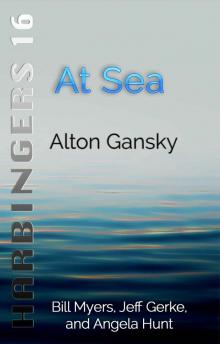 At Sea (Harbingers Book 16)
At Sea (Harbingers Book 16)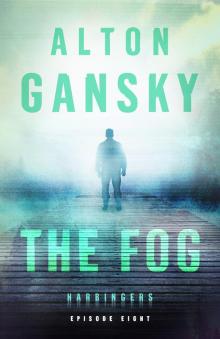 The Fog
The Fog Finder's Fee
Finder's Fee Wounds
Wounds End Game (Harbingers Book 20)
End Game (Harbingers Book 20)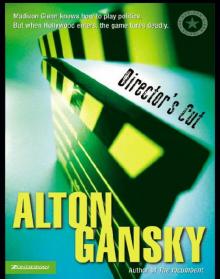 Director's Cut
Director's Cut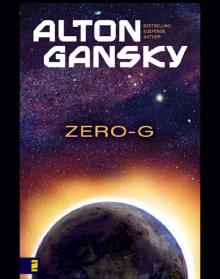 Zero-G
Zero-G By My Hands
By My Hands The Village (Harbingers Book 12)
The Village (Harbingers Book 12) Beneath the Ice
Beneath the Ice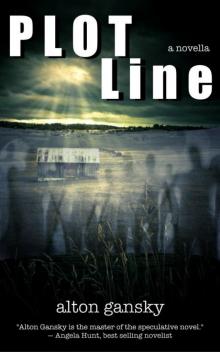 Plot Line
Plot Line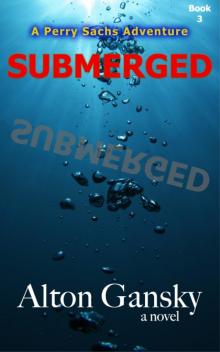 Submerged
Submerged A Treasure Deep
A Treasure Deep